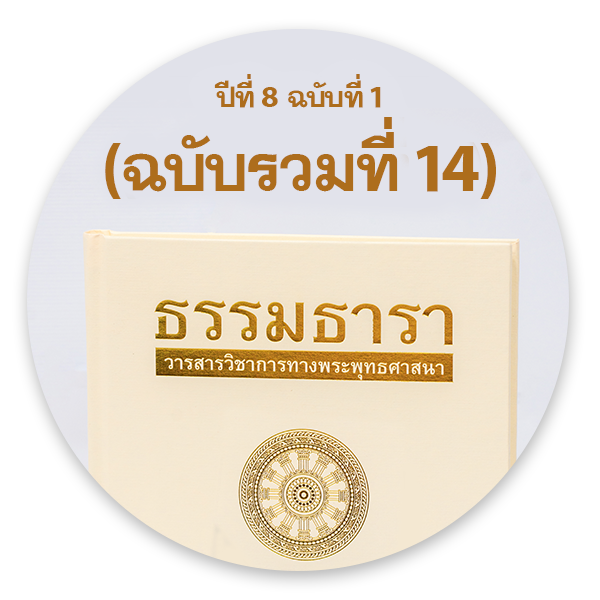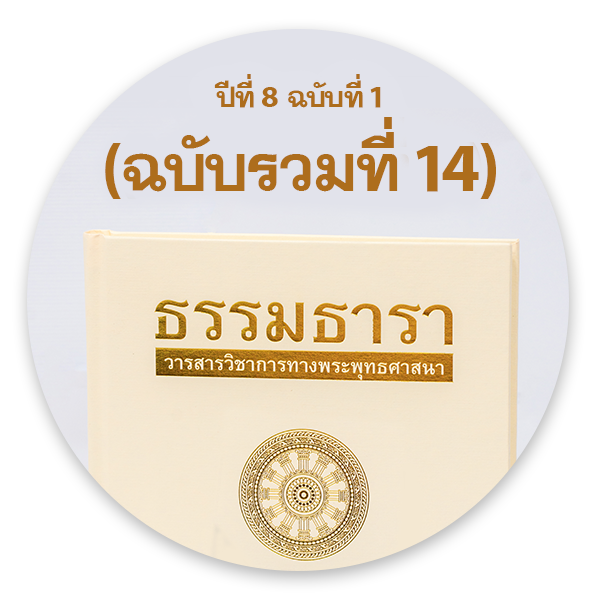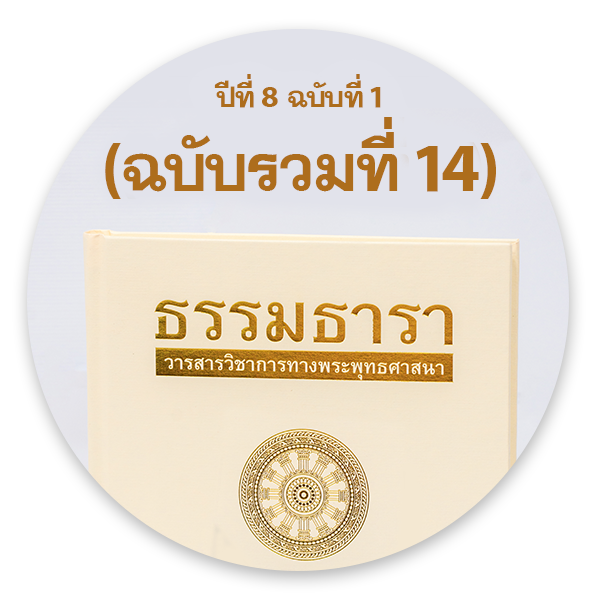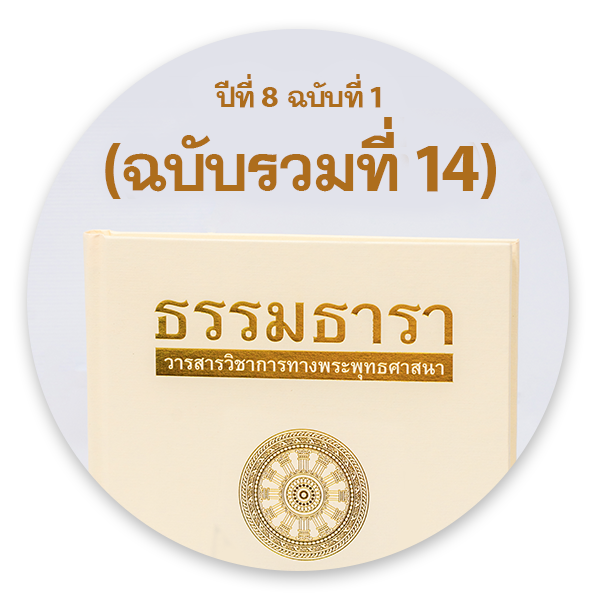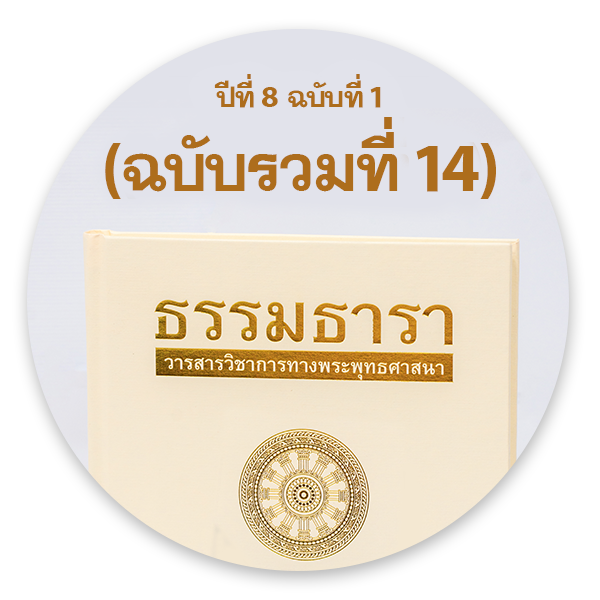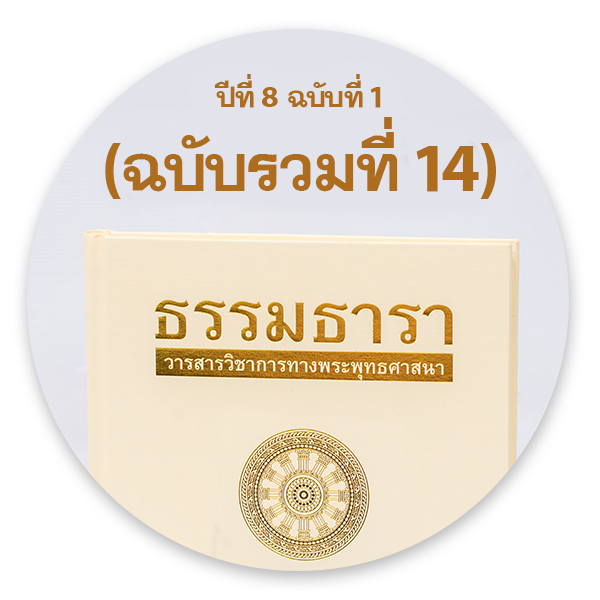ในวารสารธรรมธาราฉบับนี้ มีบทความที่น่าสนใจ ดังนี้
บทวิจัยเรื่อง “การศึกษาการสืบสายคัมภีร์ใบลานจากศัพท์ต่างที่ปรากฏ: กรณีศึกษาคัมภีร์ทีฆนิกายฉบับใบลานอักษรขอม” ของ ดร. บรรเจิด ชวลิตเรืองฤทธิ์ ได้แสดงให้เห็นอย่างชัดเจนของประโยชน์จากการตรวจชำระเนื้อหาในพระไตรปิฎก โดยใช้ข้อมูลจากคัมภีร์ใบลานบาลีสายจารีตต่างๆ ทั้งสายอักษรขอม สิงหล พม่า ธรรม และมอญ จำนวนมาก ซึ่งช่วยให้สามารถสาวย้อนกลับไปหาคำอ่านดั้งเดิมได้อย่างถูกต้องแม่นยำ โดยได้ศึกษาและยกตัวอย่างคำต่างที่ปรากฏในคัมภีร์ใบลานบาลีทีฆนิกายสายจารีตต่างๆ มาวิเคราะห์ และให้เหตุผลที่นำไปสู่บทสรุปคำอ่านดั้งเดิมที่ถูกต้องไว้อย่างชัดเจน น่าสนใจมากๆ โดยเฉพาะผู้ที่เห็นความสำคัญของการรักษาคำสอนดั้งเดิมของพระสัมมาสัมพุทธเจ้าให้ถูกต้องบริสุทธิ์บริบูรณ์
บทวิจัย เรื่อง “พระมหากัจจายนะในเอกสารฉบับต่างๆ (2): ภารกิจมอบหมายจากพระเจ้าจันฑปัชโชตและพระพุทธเจ้า” ของ ดร. ชาคริต แหลมม่วง เป็นบทวิจัยต่อเนื่องเรื่องพระมหากัจจายนะ โดยอาศัยข้อมูลจากคัมภีร์บาลีของเถรวาทและคัมภีร์ของนิกายมูลสรวาสติวาท ซึ่งข้อมูลในคัมภีร์บาลีเมื่อมีประเด็นที่ต้องการการวินิจฉัยที่ละเอียดถูกต้อง ยังได้ศึกษาลงลึกไปถึงคัมภีร์ใบลานบาลีของสายจารีตต่างๆ ทั้งสายอักษรขอม อักษรสิงหล อักษรพม่า และอักษรธรรม รวม 11 ฉบับ มาเทียบเคียง และในประเด็นที่ข้อมูลในคัมภีร์เถรวาทกับมูลสรวาสติวาทไม่ตรงกัน ก็ได้ศึกษาละเอียดลงไปโดยอาศัยข้อมูลจากคัมภีร์อรรถกถาบาลี และคัมภีร์ของนิกายต่าง ๆ ที่เกี่ยวข้องในภาษาจีนมาเทียบเคียงด้วย ทำให้ได้ความกระจ่างในเรื่องราวของพระมหากัจจายนะและการเผยแผ่พระพุทธศาสนาในแคว้นอวันตีอย่างชัดเจน
การศึกษาวิจัยพระพุทธศาสนาในเชิงลึก โดยอ้างอิงข้อมูลคัมภีร์ใบลานบาลีจากสายจารีตต่างๆ เทียบเคียงกับคัมภีร์คู่ขนานและคัมภีร์อื่นๆ ที่เกี่ยวข้องในพากษ์ภาษาต่างๆ อย่างละเอียดลึกซึ้งเช่นนี้ ในประเทศไทยยังมีผู้ทำน้อยมาก เพราะต้องอาศัยความรู้ด้านภาษาคัมภีร์ทั้งบาลี สันสกฤต จีน ทิเบต รวมทั้งทักษะการวิจัยขั้นสูง แต่เป็นประโยชน์อย่างยิ่งต่อการทำความเข้าใจเนื้อหาในพระไตรปิฎกได้อย่างถูกต้องลึกซึ้ง และเป็นการยกระดับการวิจัยพระพุทธศาสนาในประเทศไทยสู่ระดับสากล
บทความวิชาการเรื่อง “อาบัติลักทรัพย์ในทุติยปาราชิก: การตีความแบบหนึ่ง” ของ ผู้ช่วยศาสตราจารย์ ดร. สมพรนุช ตันศรีสุข ได้นำเสนอความเห็นว่า การพิจารณาอาบัติทุติยปาราชิกจากมูลค่าของทรัพย์ที่ลักขโมยนั้น ควรยึดถือตามระดับของทรัพย์ที่เป็นความผิดทางอาญาในสังคมนั้นๆ เพื่อรักษาเจตนารมณ์ของสิกขาบท
บทความวิชาการเรื่อง “คัมภีร์สมันตกูฏวัณณนา: วิเคราะห์ประเด็นเกี่ยวกับคติความเชื่อของศรีลังกา” ของ พระมหาพจน์ สุวโจ, ผศ.ดร. และพระมหาถนอม อานนฺโท, ดร. ได้ศึกษาคัมภีร์นี้โดยวิเคราะห์เชิงลึกถึงบริบททางสังคมของศรีลังกาในขณะแต่งคัมภีร์ ซึ่งทำให้เห็นถึงวัตถุประสงค์แท้จริงของการแต่งคัมภีร์นี้ว่า เพื่อยกย่องรอยพระพุทธบาทบนยอดเขาสมันตกูฏ และสรรเสริญเทพสุมนะในฐานะผู้อารักขารอยพระพุทธบาทเพื่อป้องกันอิทธิพลของความเชื่อฮินดูและการนับถือเทพอุบลวัณ (เทพวิษณุ) ไม่ให้แทรกซึมเข้ามาในพระพุทธศาสนา
บทความวิชาการเรื่อง “ความหลากหลายด้านสถาปัตยกรรมในยุคสุโขทัย: เจดีย์ทรงระฆังและทรงพุ่มข้าวบิณฑ์” ของ พระมหาสราวุธ ญาณโสภโณ และพระจาตุรงค์ อาจารสุโภ, ดร. ได้ศึกษารูปแบบสถาปัตยกรรมเจดีย์ในยุคสุโขทัยทั้งทรงระฆังคว่ำและทรงพุ่มข้าวบิณฑ์ พบว่า ได้รับอิทธิพลจากรูปแบบเจดีย์ทั้งของลังกา ทวารวดี พม่า ล้านนา โดยมีภาพประกอบด้วย ทำให้ผู้อ่านได้ความรู้เรื่องพัฒนาการของรูปแบบเจดีย์ได้อย่างดี
หวังว่าท่านผู้อ่านจะได้ความรู้ แง่คิดและความเพลิดเพลินตามสมควร
พระครูปลัดสุวัฒนโพธิคุณ (สมชาย ฐานวุฑฺโฒ)
1 มกราคม 2565
วันขึ้นปีใหม่
เผยแพร่แล้ว: 2022-01-31

